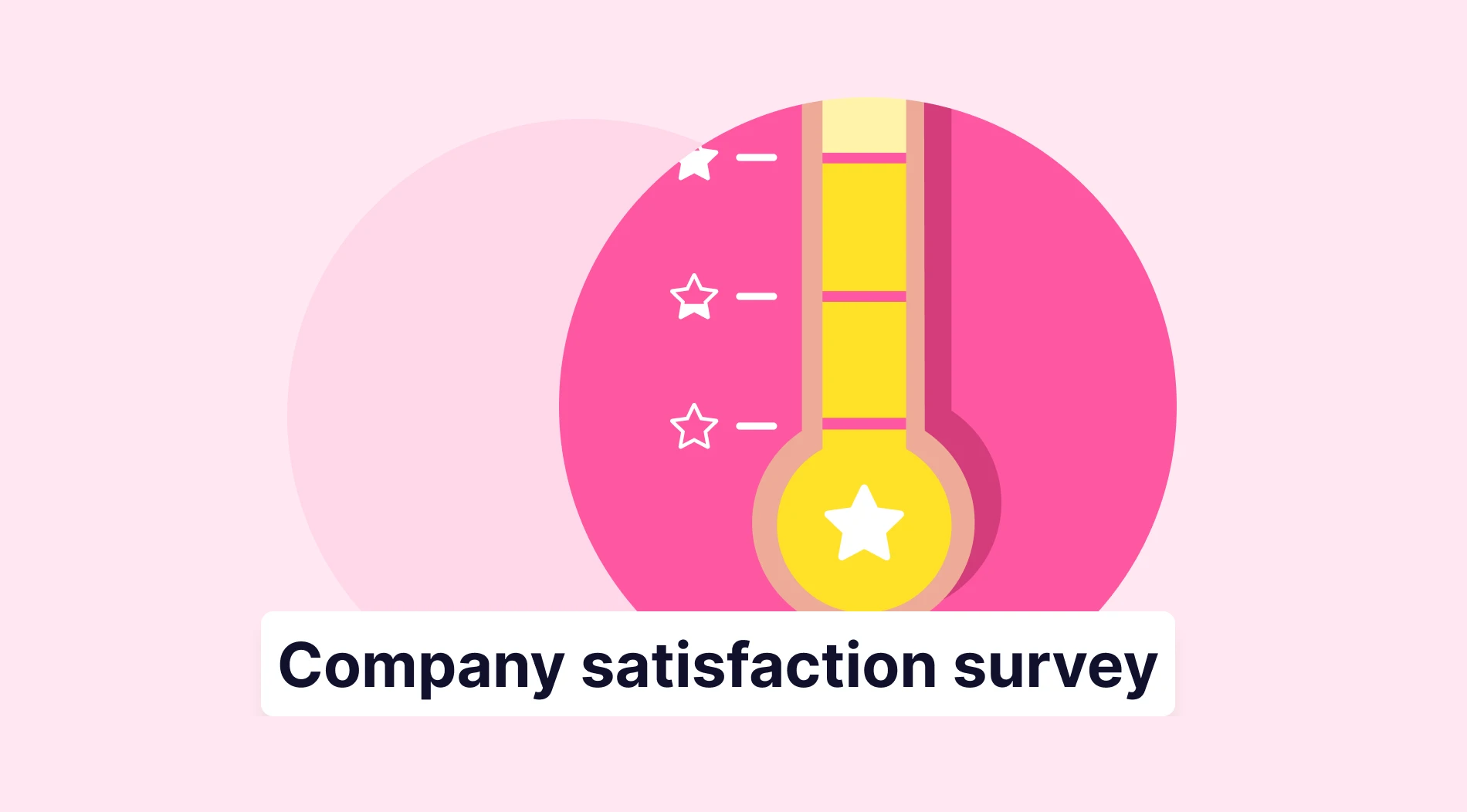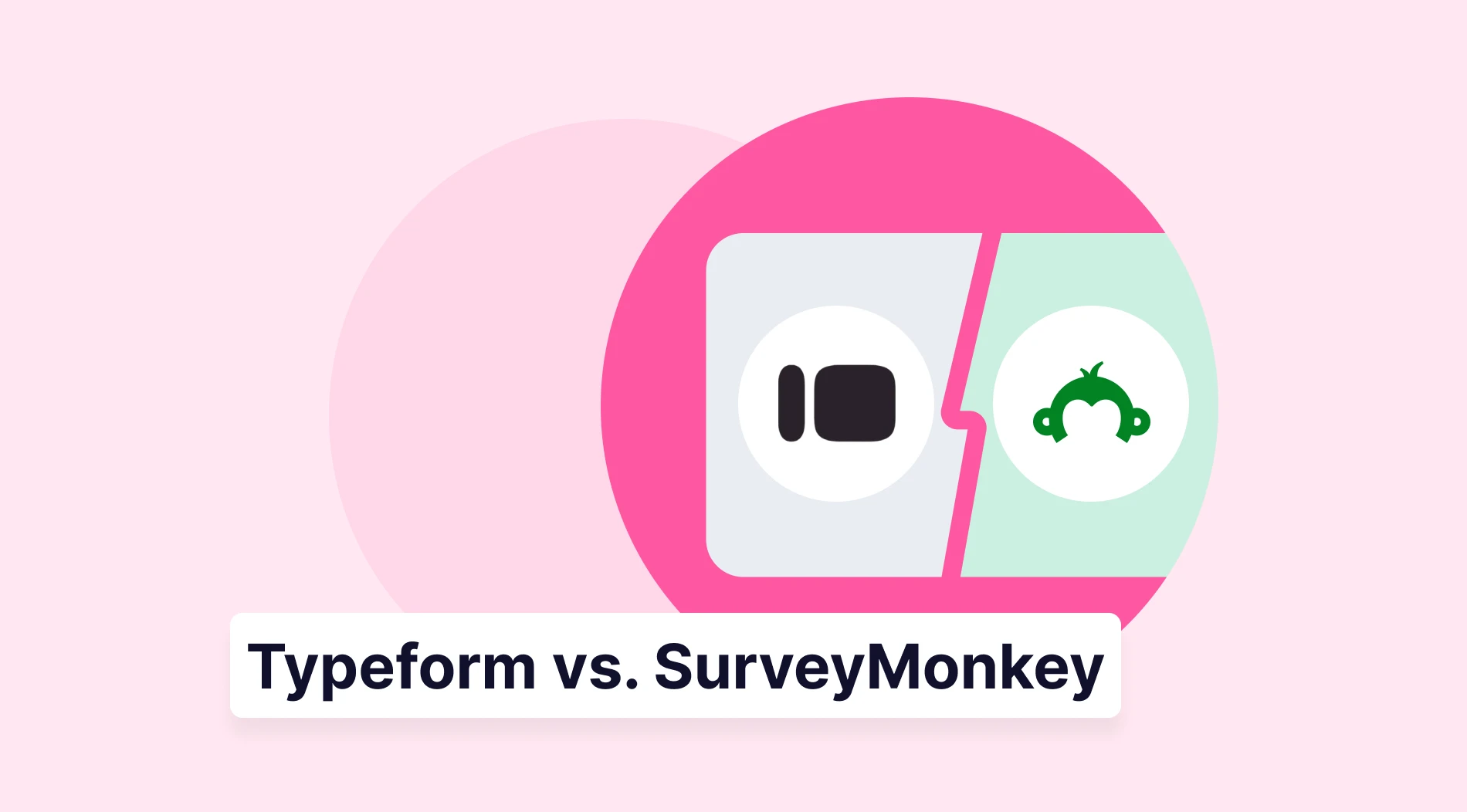In today’s digital landscape, businesses of all sizes need effective tools to manage online form creation and data collection. Whether it’s customer feedback, event registration, or order forms, choosing the right form builder can streamline processes and save time. Two popular platforms for this are Jotform and Fillout, both of which offer unique strengths in the form creation and management space.
In this article, we’ll break down the key features of Fillout vs Jotform to help you decide which platform suits your business needs. We’ll also introduce a strong alternative among online form builders, forms.app, to offer you another powerful option for your form-building requirements that will help you collect data, asking many questions at a time.
Jotform vs. Fillout at first glance
At first glance, Jotform and Fillout offer intuitive form-building tools with customization and integration options. While Jotform provides extensive features and templates, Fillout excels in simplicity. However, deeper exploration reveals differences in pricing, features, and collaboration, which may guide your decision.
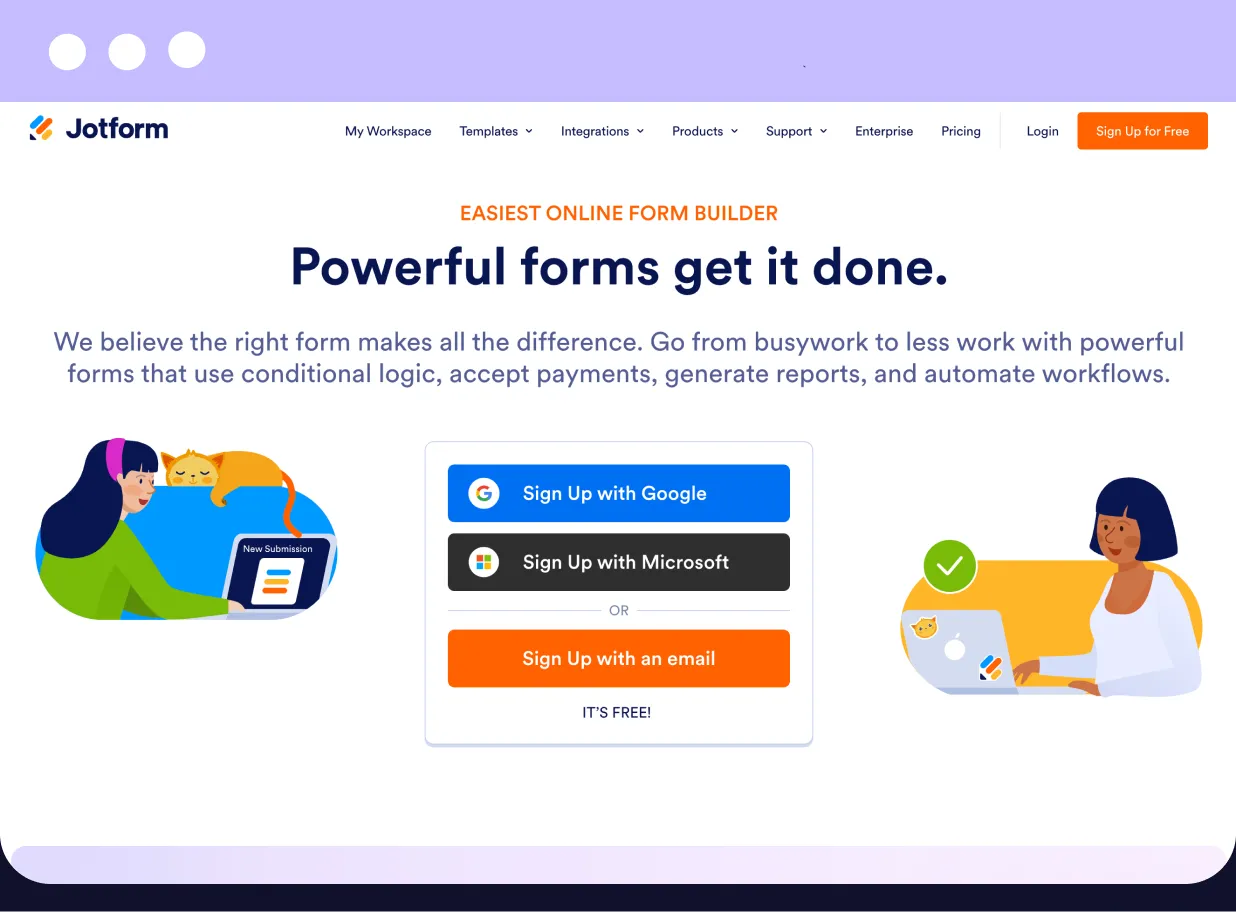
The homepage of Jotform
Jotform stands out for its versatile drag-and-drop interface, allowing users to easily build forms by adding text, images, widgets, and payment options. With a vast library of templates and extensive customization features, it’s a robust solution for businesses needing flexible form management. Jotform is also known for its powerful e-commerce capabilities, offering seamless integration with payment processors, making it ideal for businesses of all sizes.
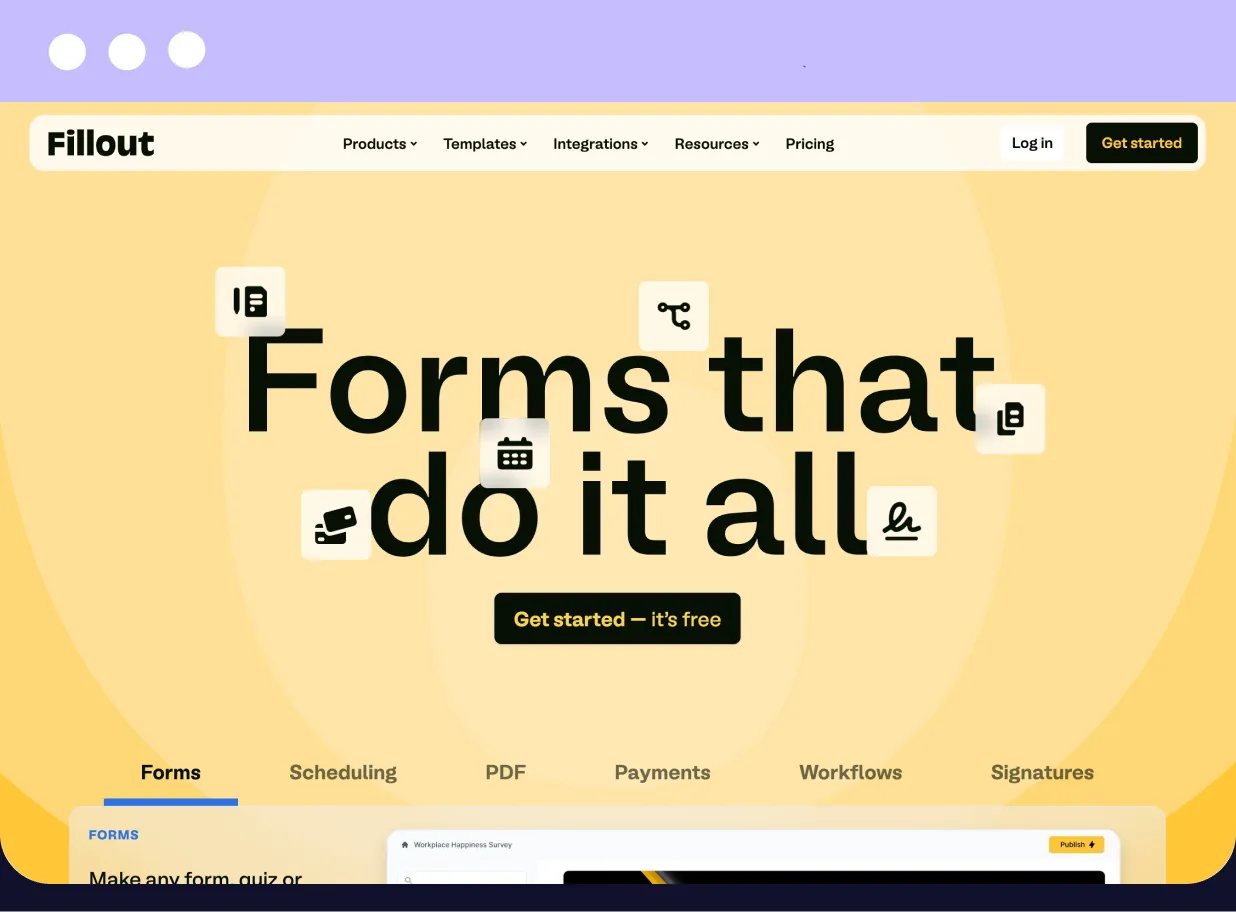
The homepage of Fillout
Fillout, on the other hand, is a streamlined form builder known for its intuitive interface and ease of use. It’s perfect for quickly creating forms, surveys, and registrations with its drag-and-drop functionality. While Fillout offers basic customization and integrates well with popular third-party tools, it may lack some of the more advanced features that users might seek for more complex form-building needs.
Jotform vs. Fillout: 7 Essential points
When choosing a form builder, there are a few key things to consider. You’ll need to think about basics like pricing and ease of use, along with more advanced features like integrations, customization, and security. We’ve outlined 7 important areas to compare between Jotform and Fillout, so you can choose the best option for your business.
1. Pricing
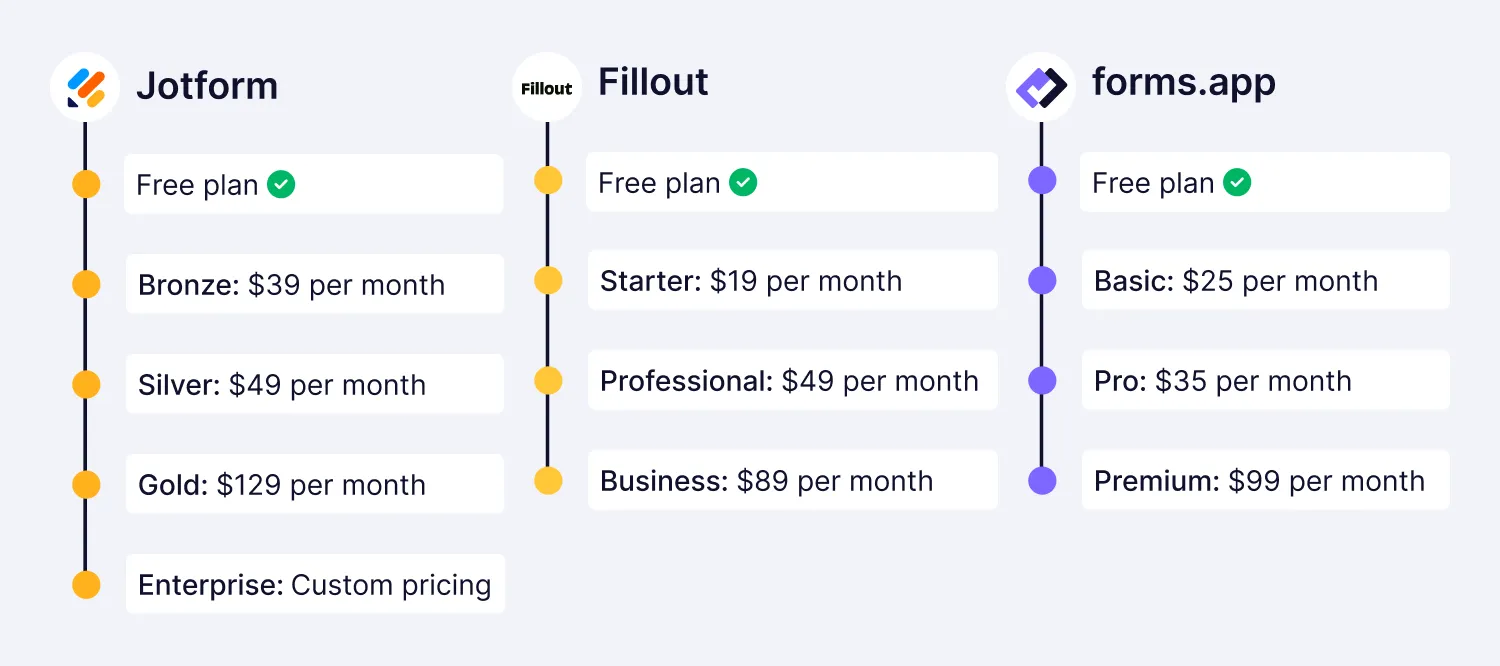
Pricing comparison between Jotform, Fillout, and forms.app
Jotform pricing plans are various, starting with a free plan for basic form creation. Paid plans begin at $24 per month for the Bronze plan. The Silver plan costs $39 per month and is suitable for growing businesses, while the Gold plan at $99 per month offers advanced features for larger teams. For custom solutions, Jotform also has an Enterprise plan with tailored pricing. Here’s a summary of Jotform’s pricing plans:
- Free Plan ✅
- Bronze: $39 per month
- Silver: $49 per month
- Gold: $59 per month
- Enterprise: Custom pricing
Fillout pricing starts with a free option for basic form creation. Paid plans begin at $15 per month for the Starter plan, which has limits on submissions. The Professional plan costs $49 per month with more features, while the Team plan is $99 per month for larger organizations. Fillout also provides a custom Enterprise plan for tailored solutions. Here's a summary of the pricing plans:
- Free Plan ✅
- Starter: $19 per month
- Professional: $49 per month
- Business: $89 per month
Consider forms.app as a top alternative, offering competitive pricing with comprehensive features. Even the free plan includes essential tools such as access to all field types, templates, and integrations. Starting at just $25 per month, forms.app is a cost-effective option compared to Jotform vs. Fillout. Here’s a breakdown of forms.app's pricing plans:
- Free Plan ✅
- Basic Plan: $25 per month
- Pro Plan: $35 per month
- Premium Plan: $99 per month
2. Form features
| Features | Jotform | Fillout | forms.app |
| Conditional logic | Yes | Yes | Yes |
| Collaboration tools | Yes | Yes | Yes |
| Email reminders | Yes | Yes | Yes |
| Payment Integrations | Yes | Yes | Yes |
| Mobile App | Yes | No | Yes |
| GDPR Compliance | Yes | Yes | Yes |
| HIPAA Compliance | Yes | No | No |
| Electronic signature | Yes | Yes | Yes |
| Document storage | Yes | No | Yes |
| Drag and Drop builder | Yes | Yes | Yes |
| AI Form Generator | Yes | Yes | Yes |
| AI Survey Tool | Yes | No | Yes |
| AI Quiz Maker | Yes | No | Yes |
3. Customization options
Jotform lets you customize your forms to match your brand easily and create online forms looking great. You can add logos, images, and videos, and use different themes to fit your company’s style. It also allows for custom thank-you pages and automated email responses to improve communication. For advanced users, Jotform offers custom CSS to create a unique and polished look for your forms.
Fillout provides a variety of customization options for online forms. You can add logos, change colors, and use themes to suit your brand. It also offers custom thank-you pages and email notifications for better engagement. For more detailed changes, Fillout supports custom CSS to give your forms a unique and professional look.
forms.app enhances customization by offering animated backgrounds, themes, and flexible font and color options to suit your brand. Advanced users can apply custom CSS for a more polished design. It also features unique List and Step views for improved user experience, breaking forms into sections. Additionally, forms.app supports video uploads within form fields, adding a dynamic and engaging element to your forms.
4. Field types
Jotform offers a diverse range of fields and question types to enhance the form design and user experience. With over 30 field options, including basic types like Text, Email, and Phone Number, as well as advanced fields such as File Upload, Star Rating, and Multiple Choice, users can create versatile and engaging forms. Jotform also supports calculations, conditional logic, and integrates with various apps, allowing for sophisticated and tailored form solutions.
Fillout provides a variety of fields and question types to enhance form functionality and engagement. With options including basic fields like Text, Email, and Multiple Choice, as well as advanced features like File Upload and Rating Scales, users can create comprehensive forms. Fillout also supports conditional logic and basic calculations, offering flexibility for designing interactive and effective forms suited to various needs.
In contrast, forms.app goes above and beyond, offering over 30 unique and versatile fields, including options like Product Basket, Drawing Field, and Field Groups. These field types provide a more dynamic and engaging form experience, allowing for enhanced functionality. Even with its free plan, users have access to this rich variety of fields, making forms.app a strong alternative for creating more interactive and specialized forms.
5. Integrations
Jotform, stands out with over 100 integrations, including popular tools like Google Sheets, Dropbox, Salesforce, and Mailchimp. It also works with Zapier, making it easy to automate workflows and sync data across platforms. These integrations help streamline processes and boost efficiency, especially in tasks like customer support and multi-page forms.

Integrations of Jotform
Fillout integrates with essential tools like Google Sheets, Zapier, and Slack. While it doesn't offer as many options as some platforms, its key connections and Zapier compatibility still allow for effective automation and data syncing across systems.
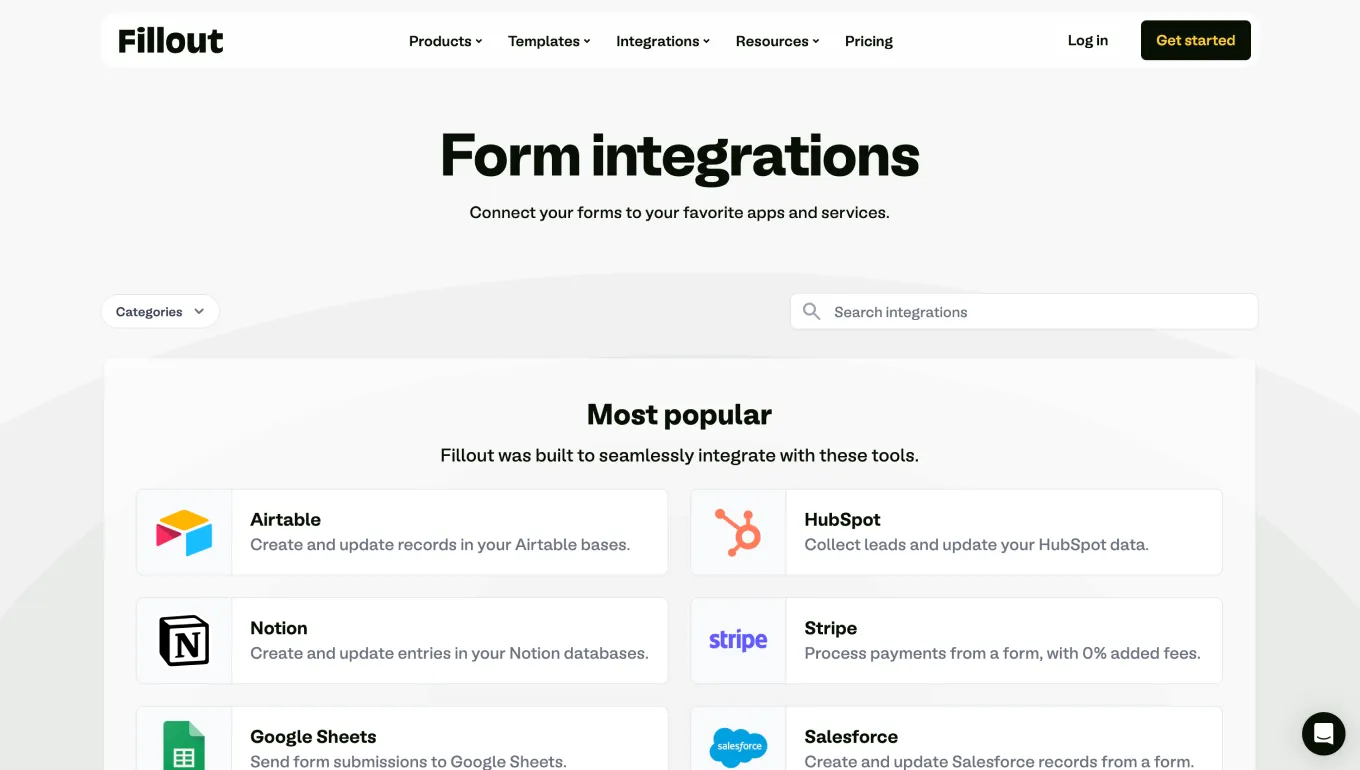
Integrations of Fillout
forms.app offers key integrations with tools like Google Sheets, Slack, Mailchimp, and PayPal and google analytics. It also supports Zapier, allowing connections to over 3,000 apps, which helps expand its integration capabilities despite having fewer direct integrations compared to platforms like Jotform and Fillout.
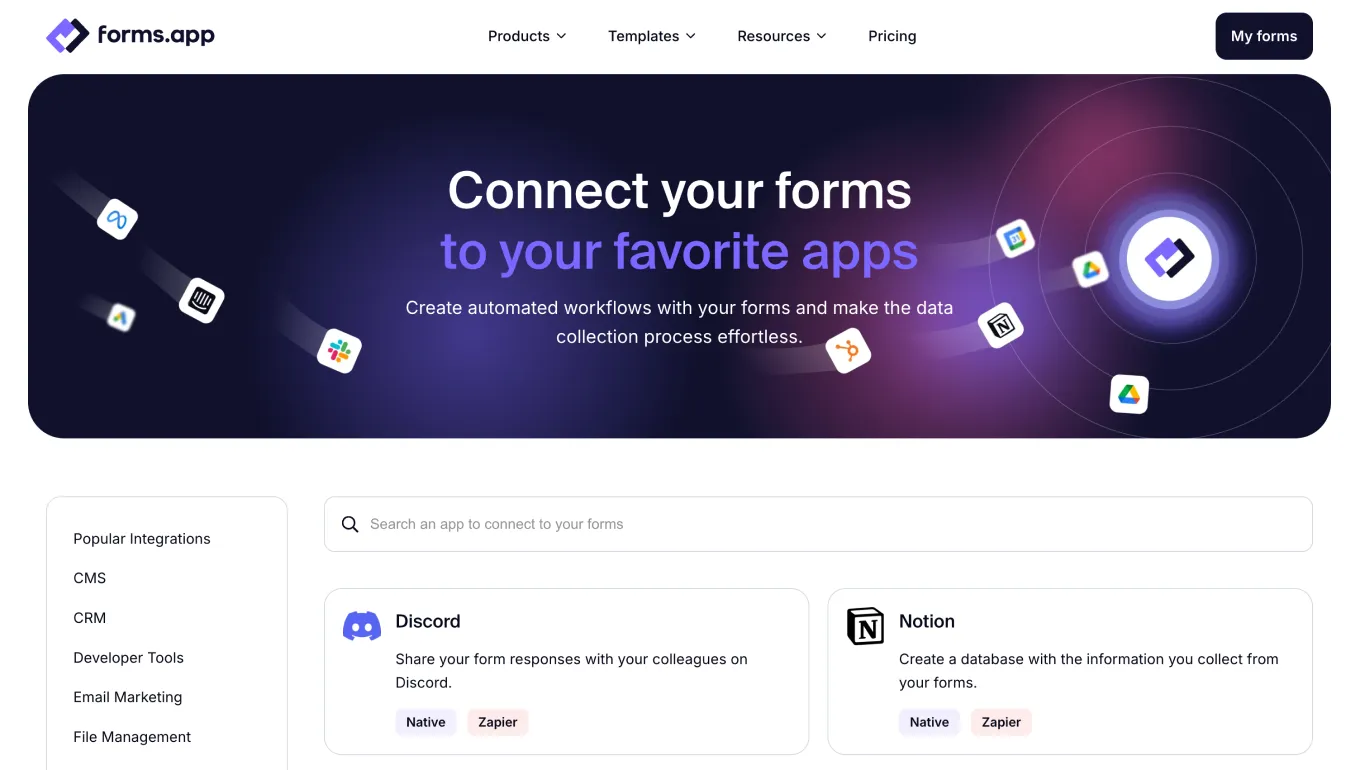
Integrations of forms.app
6. Team collaboration
Like its alternatives, Jotform review can be made with strong team collaboration features, allowing users to share forms and manage submissions with their team. While its built-in collaboration tools work well, integrations with apps like Slack, Google Drive, and Trello boost team coordination and improve project management, ensuring smooth teamwork and efficient form handling.
Fillout’s collaboration features depend on the subscription plan chosen: the Basic plan permits collaboration with one user, the Pro plan allows up to three collaborators, and the Business plan supports joint form creation and management with as many as five team members. Additionally, integrations with tools like Slack and Google Workspace enhance team communication and streamline form management, making collaboration more efficient.
forms.app Team collaboration begins with the Basic plan, which includes one additional team member. The Pro plan enhances collaborative capabilities by allowing up to four team members to work together on form creation and management. For larger teams, the Premium plan accommodates up to nine members, making it ideal for extensive collaborative efforts. This tiered approach promotes efficient teamwork across all pricing plans, enabling teams to manage forms and submissions effectively.
7. Templates
Jotform offers a diverse collection of over 10,000 templates, covering a wide range of use cases such as surveys, registrations, and feedback forms. These drag and drop form builder templates are designed for both style and functionality, and users can easily customize them to meet their specific needs, making form creation quick and efficient.
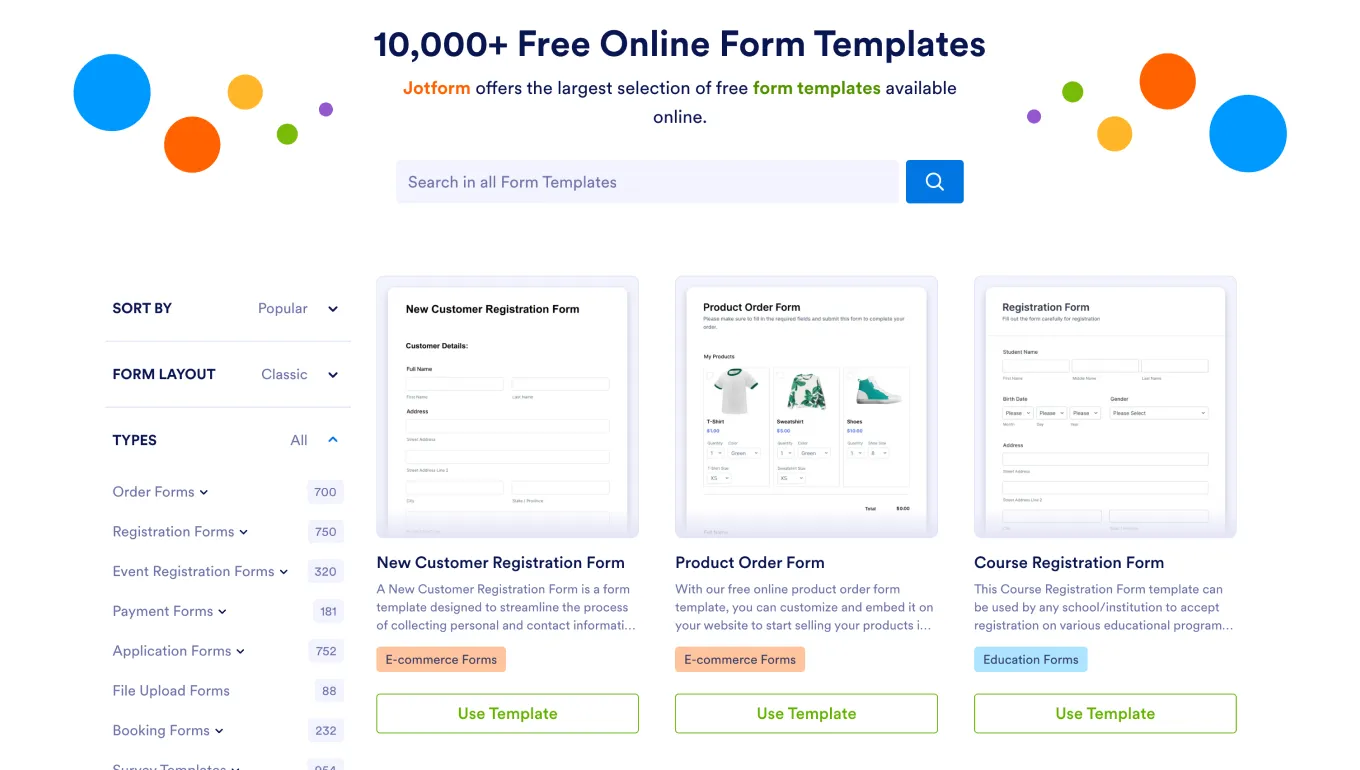
Template gallery of Jotform
Fillout provides a solid selection of 350+ pre-built templates for various purposes like surveys, registrations, and contact forms. While its template library is smaller compared to some other platforms, it offers essential designs that are easy to customize, helping users efficiently create forms tailored to their needs.
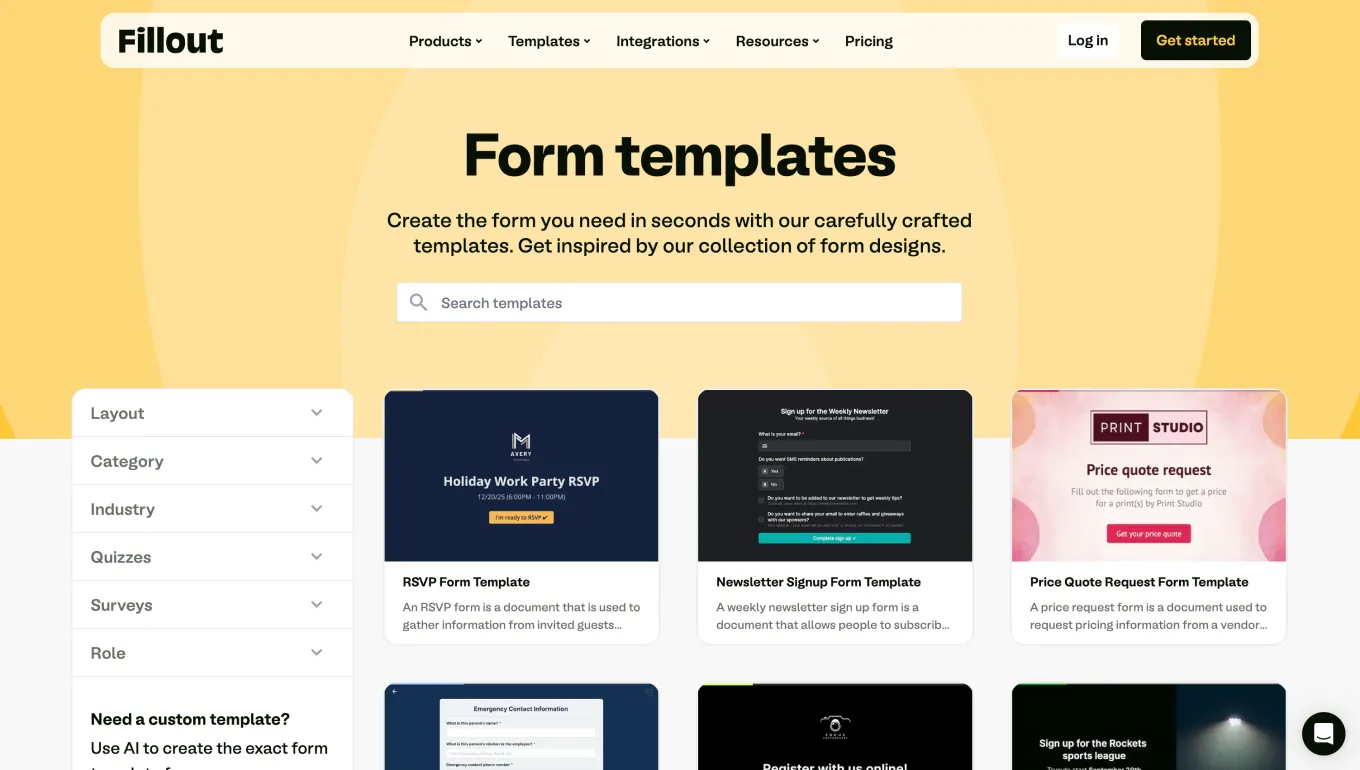
Template gallery of Fillout
A better alternative: forms.app
After comparing the options, it's clear that each tool has its strengths and weaknesses. Some excel in customization but can be more difficult to use, while others are simpler but lack advanced features. If you're still deciding between Jotform and Fillout, it might be worth checking out an interesting alternative: forms.app.
forms.app is a versatile, AI-powered form builder that makes form creation easy for businesses of all sizes. With its simple drag-and-drop interface, it's designed to be user-friendly for both beginners and experts alike. Key features include AI tools like the AI Form Generator, AI Survey Tool, and AI Quiz Maker, seamless integrations with apps like Slack and Google Drive, and a mobile app for on-the-go use. It also offers a vast library of over 5000 templates organized by industry and purpose.
- Easy to use: Drag-and-drop interface that suits both beginners and experienced users. 🧰
- AI tools: Includes AI Form Generator, AI Survey Tool, and AI Quiz Maker for effortless form creation. 🖥️
- Seamless integrations: Connects with Slack, HubSpot, Stripe, and over 3,000 apps via Zapier. 🖇️
- Mobile app: Available on Google Play and Apple Store for creating and managing forms on the go. 📱
- Rich template library: Access over 5,000 templates, making form creation fast and easy. 📖
- Team collaboration: Multiple users can work on forms simultaneously with customizable permissions. 🧑💻
Final words
In conclusion, Jotform and Fillout each bring unique strengths to form creation. Jotform offers a wide range of features, including advanced customization and many integrations, making it ideal for businesses needing more flexibility and power. Fillout, however, provides a simpler experience, focusing on essential features and ease of use, perfect for those who value straightforward form creation.
It's important to assess your specific needs and preferences when choosing a form-building tool. Jotform and Fillout each have their unique strengths, so understanding what you require will help you select the best platform for your goals. Alternatively, forms.app offers a balanced mix of ease of use and advanced features, presenting a versatile option for effective form creation.
forms.app, your free form builder
- Unlimited views
- Unlimited questions
- Unlimited notifications

